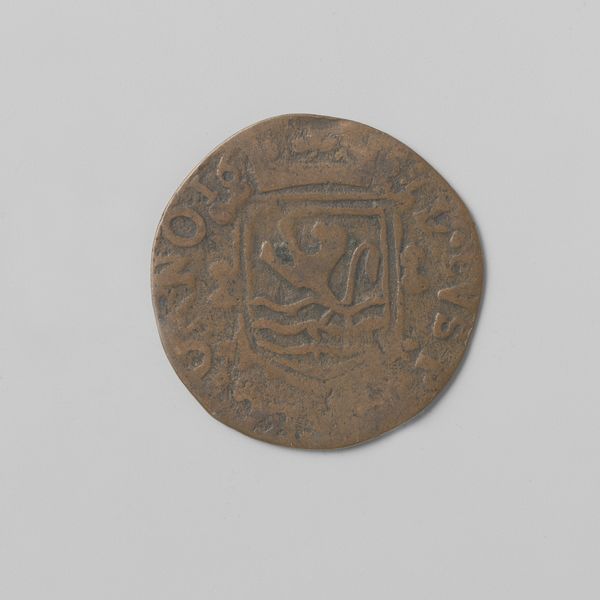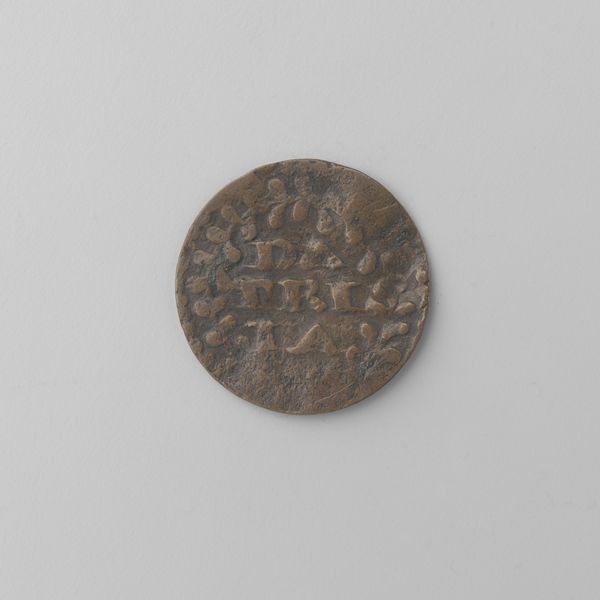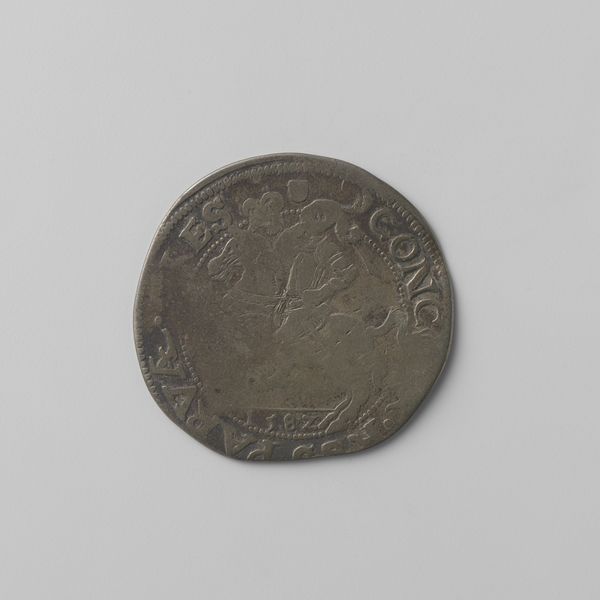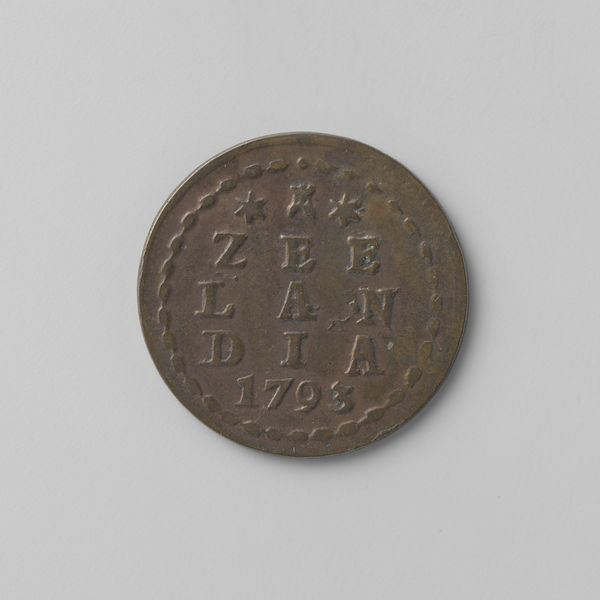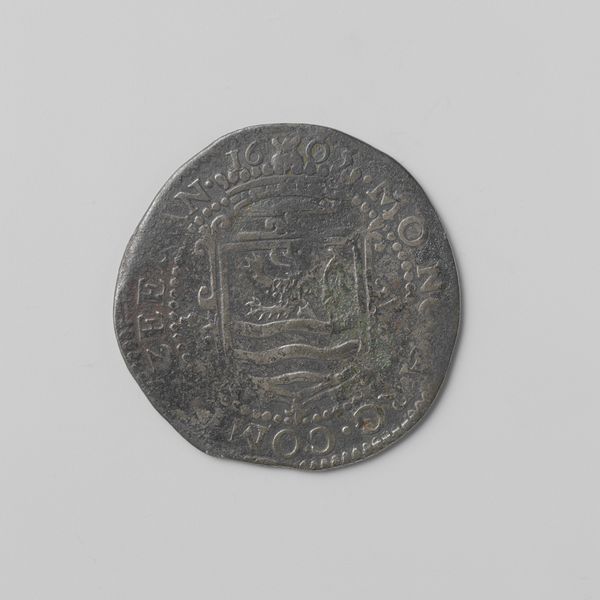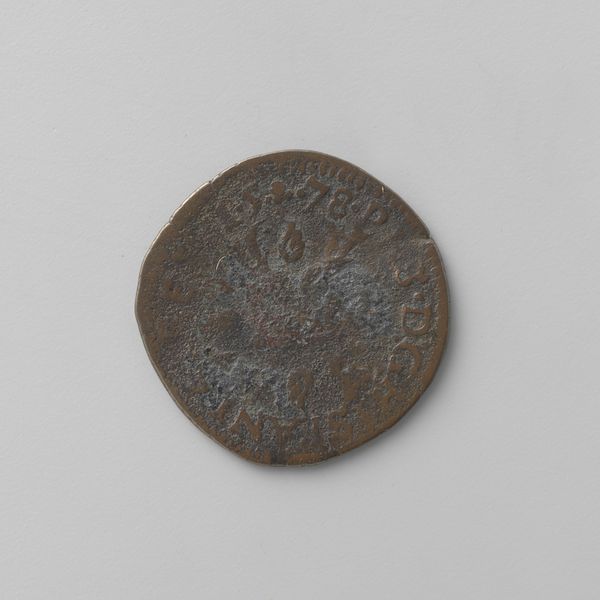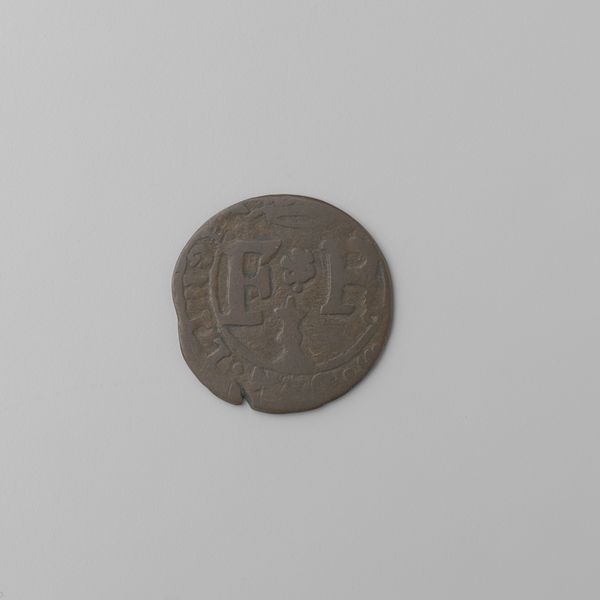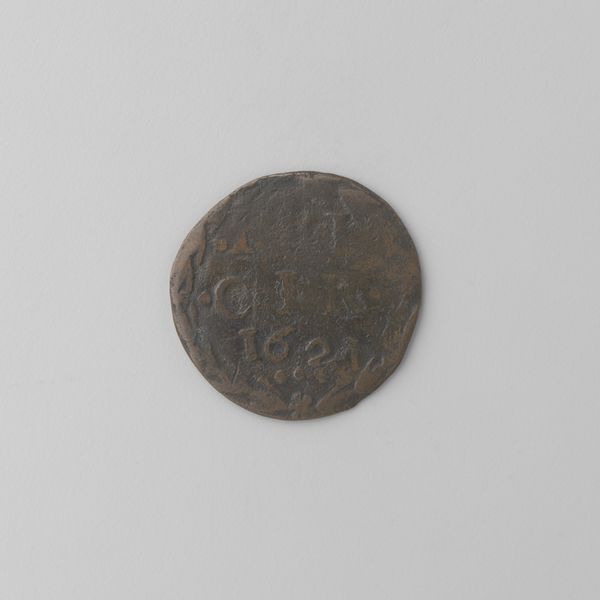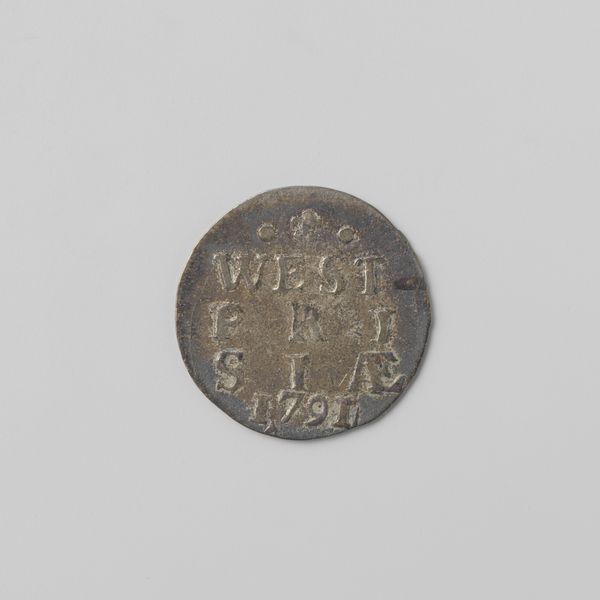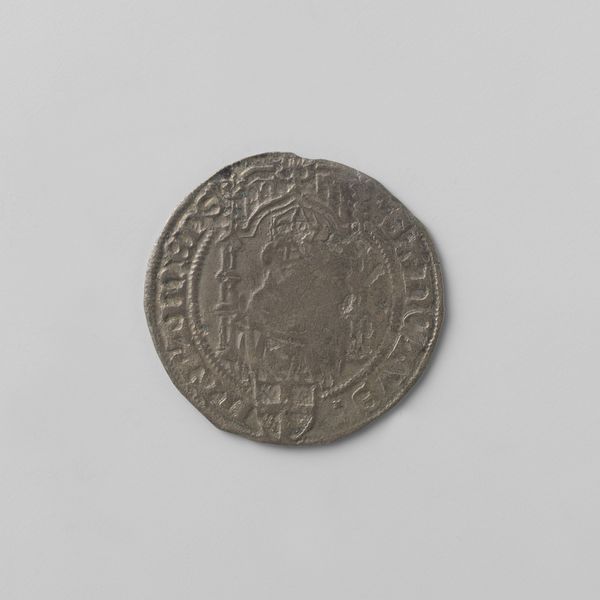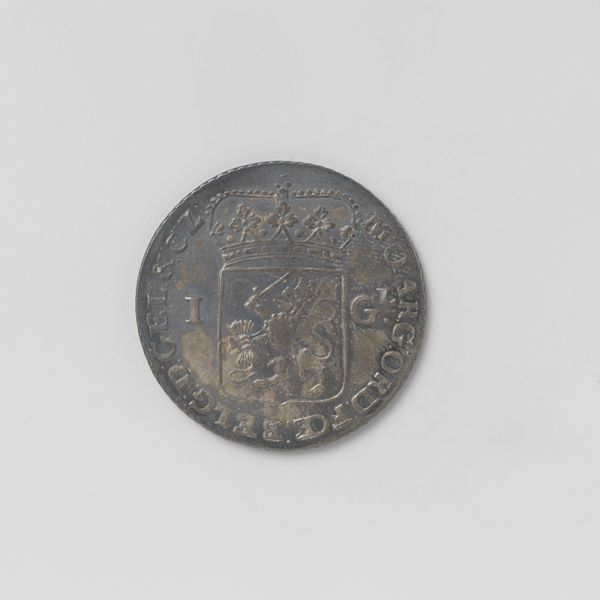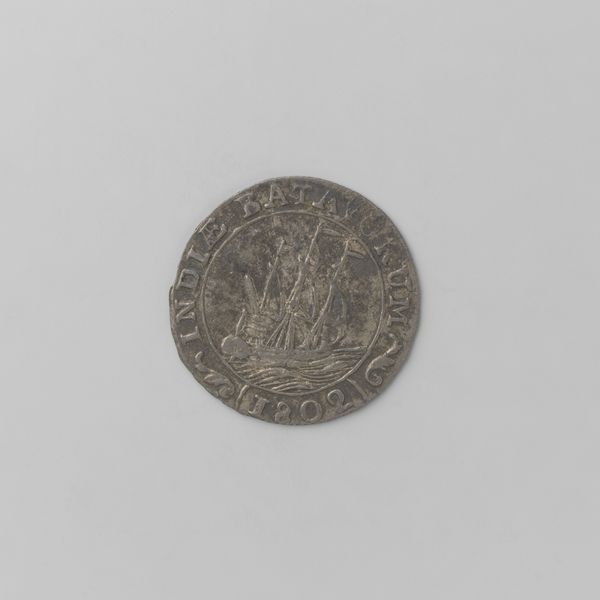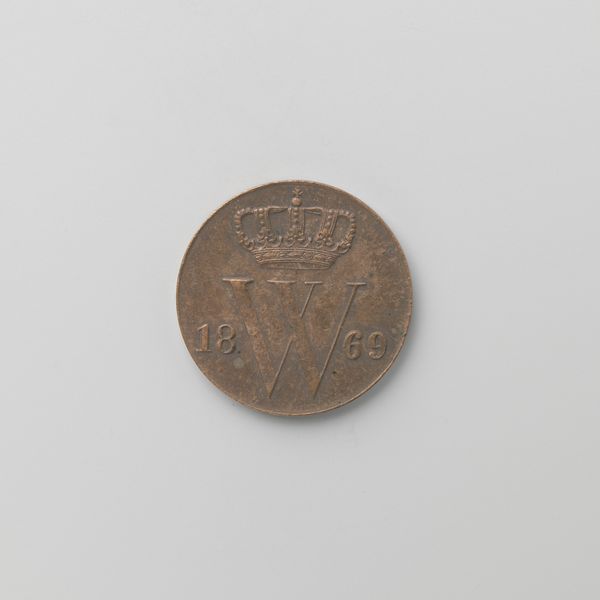
print, metal, engraving
#
baroque
# print
#
metal
#
engraving
Dimensions: diameter 2.2 cm, weight 1.94 gr
Copyright: Rijks Museum: Open Domain
Curator: A modest object, but rich with history. We're looking at an Overijsselse duit, a small coin minted in 1628. The material is metal, with an engraving creating its intricate design. Editor: It feels like something unearthed from a forgotten time. I notice the circular shape and the detailed inscription—there is almost an archaic aesthetic. Is there a way of knowing the function and distribution context? Curator: Absolutely. These "duiten," as they were called, were low-value copper coins, integral to daily transactions in the province of Overijssel during the Dutch Golden Age. They were instruments of economic activity. Editor: So the material simplicity served a clear purpose. Looking closely at the inscription, one can observe botanical forms intermingling with the textual arrangement. What could be the correlation? Curator: A good point. The Baroque era was characterized by elaborate ornamentation, visible here not just in lettering, but the floral design surrounding the text as well. I would suggest there is visual rhetoric, one designed to elevate an otherwise rather utilitarian object. Editor: Yes, that artistic flourish definitely adds layers to what might otherwise seem mundane. Do the marks or wear patterns tell a story, or add a sense of provenance that reveals other possible meanings for interpreting its status within Overijssel society? Curator: They do, don't they? Those nicks and scratches are, if we choose, entry points into the lived experience. Its worn state hints at its constant circulation in the bustling markets and lively port cities. This coin likely passed through countless hands. Editor: Imagining its trajectory through history does indeed alter how one interprets it. Perhaps its meaning surpasses monetary worth, and it served a function beyond its prescribed purpose within that economic system. Curator: Perhaps so. It serves to show us that sometimes, it's in these minor objects that major narratives can unfold, bridging material and historical investigation. Editor: An appropriate reflection, as such artifacts invite both a nuanced aesthetic contemplation and contextual understandings.
Comments
No comments
Be the first to comment and join the conversation on the ultimate creative platform.
